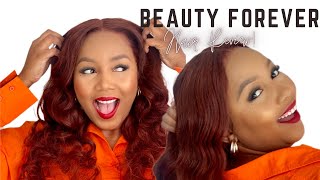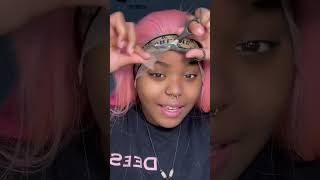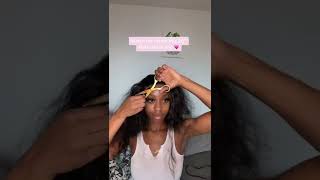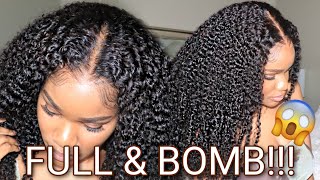Long Layered Haircut Tutorial With A Razor
- Posted on 20 November, 2018
- Long Hair
- By Anonymous
SIGN UP FOR FSE ON DEMAND:
SHOP FOR MY SCISSORS: https://freesaloneducation.com/product...
SHOP YS PARK COMBS:
http://freesaloneducation.com/collecti...
SHOP CARVING COMB RAZORS:
http://freesaloneducation.com/collecti...
SHOP ERGO BRUSHES:
http://freesaloneducation.com/collecti...
SHOP FOR MY SALON FURNITURE AT MINERVA BEAUTY:
https://www.minervabeauty.com/FSE
My Website
http://www.freesaloneducation.com
FOLLOW ME ON:
Instagram ► http://instagram.com/freesaloneducatio...
Twitter ► https://twitter.com/saloneducation
Facebook ► http://facebook.com/freesaloneducation...
Snapchat ► MattBeckFSE
Business Contact: [email protected]
-------------------------------------------
Thanks for being Part Of The FSE FAMILY!
Video we're gon na be using our Donald Scott, carving comb. Today. I love this tool. It'S a brand new tool that we have on free salon: education, comm, we're replacing the blades first. So every haircut that I do with the carving comb, I always put fresh blades in because you're gon na get the best cut lines and also you're not going to damage the hair. If you replace the blade so blades are not expensive and you think about how much you charge for a haircut, it's definitely good to at least change it every two haircuts, but I tried to do it every single haircut. You slide both blades in there's, a 50 % cut side and a hundred percent cut side, so we're gon na be using the 100 % cut side throughout the majority of this haircut, then we're gon na go into the 50 % cut side, which will cut 50 % of the hair at the end of the cut, as well like, I said, we're using the fine toothed carving comb, there's also a wide toothed carving comb. So, depending on what you're looking for tension wise, you can choose which carving comb best suits the cut. We'Re preparing the hair with prepare, so that goes well. This is a liquid tool. Glide, it's also made by Donald Scott. It perfect matches up perfectly with the razor because it allows you to glide to the hair when you're, combing and also glide through the hair. It conditions the hair for razor cutting, so it's specifically made for cutting hair, so we're gon na start off by taking a diagonal forward section from the parting. So she's got a right hand, side parting. That'S all the sectioning there is in this cut. I clipped away the right side of her head and now I'm taking diagonal forward sections from the parts down to the hairline right around the fringe area. Now the over direction plays a key role in this cut. This is one of my favorite techniques to do when cutting layering and cutting longer hair. But you need to know how much elevation and how much angle you're putting on the hair when you over direct it. So the more I over direct it, the sharper or the more of an angle I'm gon na get on the haircut, then the higher I bring the hair the more elevation. I give the hair the lighter it's going to feel. So if you have really thick hair, you want to go higher like I am right now you could even go higher than that. If you wanted to, if you have fine hair, you want to stay lower with your elevation, because that's gon na help build up a little extra weight throughout the face frame and it won't allow it to look weak. And I think that that's the biggest challenge with fine hair is that when you over direct it - and you elevate it too high you're cutting out too much weight, so it just has a weak feel to it. This mannequin has really really thick coarse hair. So we don't have to worry about that at all, so the over direction just keeps coming over. I keep taking diagonal forward partings exactly the same throughout the haircut just following the head shape and then over directing it to myself. As I work back on the head, my elevation may change. It could change. So, let's talk about the thicker that your guest hair is the more you move back on the head throughout the partings. You may want to elevate more to just remove more and more bulk, because you can see how the heads are rounding off right there and if I don't elevate, if I keep the elevation the same, what's going to happen is I will build up extra weight into The back of the head so we're keeping that over direction coming we're wrapping it around the face. I like to get a really severe over direction on this, because it's gon na give me a real nice angle, but it's also going to remove a lot of bulk and the key to this is just to keep working around the head shape until you run out Of hair, so until there's no more hair to cut and you're over directing it over, you just keep going. That'S what's going to help blend that entire cut together, so you're, not gon na see us do too much in the back. We'Re actually cutting the back in the front of the head, so this is kind of an all-in-one haircut. It'S a lot of condensed cutting. You could take bigger sections if you wanted to to have to get a similar result with this cut. So now I'm going to take out my guide line, I'm just taking a piece, a little triangle from the front and clipping the rest of the hair away, and then I take a diagonal forward section on the right hand, side exactly the same as I did on The opposite side now I want to go through and I really want to find that guideline, because there's going to be a little bit of an angle on this, so I want to find that last piece that I cut, which is the first piece of the fringe To really use that as my guideline and not that whole chunk of hair, you see how the angles that I'm running the carving comb I'm going at about 45 degree angle onto the hair. That'S what it's going to give you the best cut with any razor that you're using out there so make sure that you keep that angle in there nice. So this side of the cut is what I would consider the weak side of the cut. There'S less density! Less hair, so my elevation is not going to be wrapping all the way around the head and high elevation. We'Re gon na consider we're gon na think of it like it's fine, hair or find our low density that we're working with so a little bit. Lower elevation quickly run through that side and we're good to go. So now I'm gon na work into the back and what I'm gon na do is take a vertical panel out of the back Center back, that's about three inches wide and I'm gon na work. The 50 % carve side of the carving comb right down from occipital bone down to the ends. It'S just a one, fluid solid slide of the carving comb which will help build in the layers and just skinny up the back of the haircut. Because if you think about it, we've taken all of the weight pushed it into the back of the hair. You could leave it if you want to, but I just like to go in and skinny it up. So we take three inch panels throughout the back. Just over directing it straight back to us keeping pretty much a square feel to those layers, and then you know just use your. I use your you know common sense as you're going in there that you want to just take out a little bit of weight into the back of the cut to allow those layers to kind of free up. Now we're going in with our blow-dryer we're using no nozzle on the blow-dryer to begin the blow-dry, because what I'm doing is just trying to remove a lot of the moisture. Now, I'm gon na put the nozzle on my blow-dryer. Take my ergo round brush and just start working that round brush through. I don't like to work the round brush into the hair right away. I don't like to really work any brush into the hair right away, because I personally feel that too much brushing on wet hair trying to rip out those tangles and all that stuff is really what is affecting and damaging hair. To begin with, so I like to go in get the hair as dry as possible. Then start working my round brush blow dry after that, so we're using a working spray in between each section. The elevation you can see on the round brush is over towards the face, elevated, nice and high, so we're over directing it just like we did in the haircut. So I think that's a cool little tip is, however, you cut the hair. Whatever angle you put on it you're over directing it because you want it to go somewhere so over direct it in the blow-dry, so it goes there as well. Now we're gon na work, the front the opposite side same thing: nice high elevation, same thing with blow-drying, guys, the more you elevate it, the lighter it's gon na fall so and the more volume you're gon na get so just go through there get nice high elevation. We'Re gon na work the top that this is that whole top panel, the mohawk section, I'm just gon na work that round brushing it forward to create a lot of volume in the top of the hair. This is: where are the layers that we've created with that carving comb in the beginning? This is where they're really gon na come to life in the cut is just giving it that volume and utilizing those shorter layers that we cut in there you can see. I pull the hair almost towards the screen, which is over the parting, just to give a little pop of volume over where the parts gon na be as well, and then you'll notice that my elevation is a lot lower in the fringe area, because I'm not trying To build up a tease bangs in there, so I that's. The only part of this blow-dry that I use low elevation is right in the fringe, all right now, working with my hands just pushing the hair back off the face a little bit of working spray through it to activate it, and that is our end result guys. I hope that you like this cut. I know that you can use this in the salon because I've been using it for ten years and I love this technique and believe it or not. You can actually use this technique as a straight hair cut as well, so it really works. It'S very versatile! You can use it in pretty much every aspect of your cutting from short hair to really really long hair. This technique works perfect, so there's the end result guys thanks for watching





Comments
Elena Haldy: I really like the use of over direction and that Donald Scott Razor looks phenomenal.I imagine you can really let your creativity go with a tool like that.Another beautiful work of art.Thank you for teaching and sharing.
kait: love it! would love to see a video about tools like blow dryers, hot irons etc in the future!
Kirsty Macfarlane: Stunning cut and finish. So nice to see real hair styled like that, instead of a head full of extensions or a wig!!
Aruna Jaisal: Your hair cutting style is so much impressive and useful for me. I learned lots of thing by your channel.
Isabel Lopez: GRACIAS POR COMPARTIR TUS TÉCNICAS DE CORTE UN PLACER HABERTE ENCONTRADO GRACIAS APRENDIENDO MUCHO CONTIGO
Cynthia Logan: Beautiful!
Corinne Bunetto: Love this so glad I searched haven't cut in some year and a friend asked for some smh I said ok I remember the basics. Told have brush up on my skills it's a little scary. She' needs me to blend her layers front and back any suggestions?? Previous person messed up,now she's trusting me. If anyone has any ideas lmk thanks
Machelle Adkins: Hey Matt I'm doing this haircut for our upcoming hairdresser competition 2/21/20. I'm going to order your tools and changing up and cutting 80's bang.
Noreen Freeman: Nice to see a different approach, thanks Matt
Ayesha Khan: Beautiful hair cut thankyou sir
coasterkat: That’s awesome!
yuswra tariq: Hi sir wow beautiful hair cut
iheartsummer87: Can you blow dry my hair like that twice a week for me??
Joanna: Is this the one I have to do for the state board practical???
Captain Tuma‘s fishing adventure: I like the front, don’t know about the back,,, over all it’s nice technique.
susan gunn: Dont like this pattern for long layers as much as your shag pattern...
Aruna Jaisal: Make video for loreal inova hair color
Aruna Jaisal: Inoa hair color video plzz sir